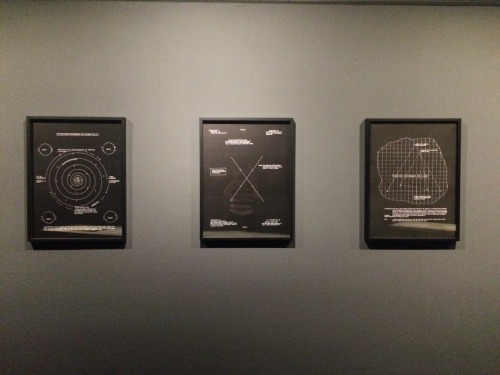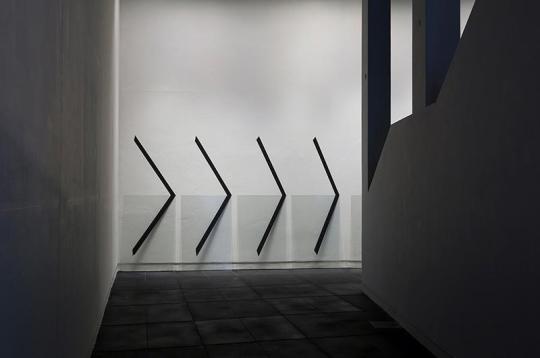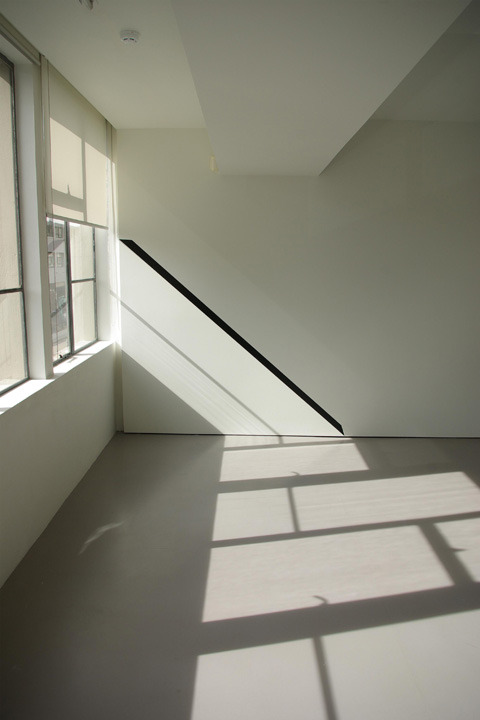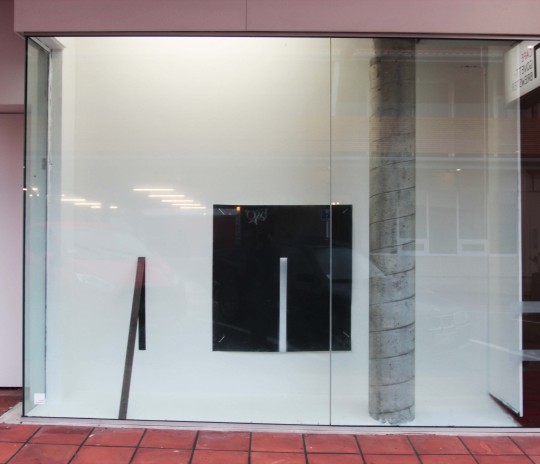By Claire Folster
A few months ago galleries around Wellington held an Art Night – an evening of late night art viewing, music, and food, with free buses travelling in between the City Gallery, Te Papa, The Dowse, Pataka, and Expressions. Utilising the opportunity to take a return bus for free (I would go to a lot more places if the transport was free), a friend and I visited the new exhibition at the Dowse Art Museum, Seraphine Pick’s ‘White Noise’. Following a tour by the artist through her largest exhibition since a survey of her work in 2009, we got a glimpse of her working process. White Noise is a collection of her work spanning from the 90’s to her most recent works.
Fig 1. Installation view of ‘White Noise’, dowse.org.nz (Photographer: John Lake)
Seraphine Pick is a bit of a big name in the New Zealand art world – a lot of people may know her work from high school. After completing her Bachelor of Fine Arts in painting in 1988 she went on to be awarded the Olivia Spencer-Bower Foundation award, the Rita Angus Cottage residency, as well as a Frances Hodgkins Fellowship. Her work straddles the world of dreams and reality. Currently, Pick told us, she has been googling images of people and placing them in an ethereal landscape, often searching for poses, and building her concepts around this. The images she chose were based entirely on whether or not she liked them aesthetically, if they seemed right for what she was imagining. In one of her 2015 works she used a found image of the costumed public attending the infamous/famous sevens. With a devil-horned woman on someone else’s shoulders, she makes a relatively harmless image unsettling and sinister. The piece is quite large and quite confronting, when you see it in person.
In style, Pick’s work could be related to that of Surrealism, Symbolism, and Post-Impressionism. It is ethereal, and surreal, and not quite what you would see in your day to day life. It is less about accurately depicting a scene than it is about creating a new scene which holds more meaning, and more emotional impact. This exhibition definitely holds true to these themes, with the title piece ‘White Noise’ an image of a musician seated in a blue, green, and gold landscape with a horse behind him.
Fig 2. Seraphine Pick, ‘White Noise’ (2010), McArthur Family Trust Collection, dowse.org.nz
Pick’s style comes through in all of the works in the exhibition, creating a harmonious flow as you walk through. Themes are separated into rooms, with her crowds grouped together and separated from the 1960’s flower child paintings. This exhibition also shows a great little series of paintings which are hard not to love – ‘Wankered Again’. In this Pick searched for people lying down, and found a plethora of drunks asleep. Painted in her dreamlike way, the drunk people still look exactly as you would expect, tinged with a bit of humour – after all, we all know those people.
Fig 3. Installation view of ‘White Noise’, dowse.org.nz (Photographer: John Lake)
The exhibition is open until the 17th of January 2016 so there is plenty of time to go out - bring your mum, your brother, and your great aunt Janice, there is plenty to see. Plus, it is a free exhibition (as the Dowse’s exhibitions always are) so there is no reason not to go and enjoy it. I would definitely recommend the exhibition if you are a casual art-goer as it is easy viewing art in many ways. But even for the more seasoned gallery goer this exhibition is enjoyable, and Pick’s new work is certainly exciting and well worth the trip.







